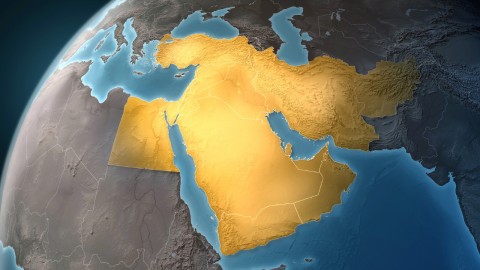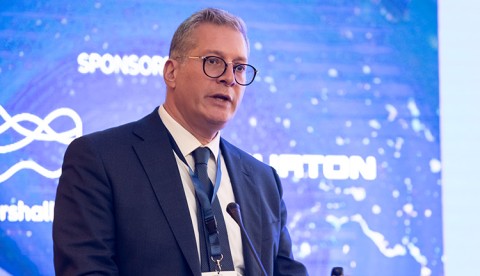Taking place against the backdrop of tough world circumstances, including the conflict in Europe, widening rifts between world powers, and deteriorating economic and environmental situation, the mission of the COP27 seemed to be very challenging. However, the 27th UN Climate Change Conference (COP27), held in the Egyptian Red Sea city of Sharm El-Sheikh, was able to reach remarkable breakthroughs toward climate change mitigation.
Against all the odds, COP27 concluded with a package of decisions that reaffirmed the world countries’ commitment to limit global temperature rise to 1.5 degrees Celsius above pre-industrial levels. The package also strengthened action to cut greenhouse gas emissions and adapt to the impacts of climate change and most importantly boosted the support of finance, technology, and capacity building needed by developing countries.
The COP27, known as the Africa COP, provided an important opportunity to discuss issues critical to the continent, while addressing issues of loss and damage, adaptation, implementation, and climate finance.
Historical Loss and Damage Agreement
The establishment of a Loss and Damage Fund was, for many, COP27’s historical accomplishment. It’s regarded as the culmination of decades of pressure from climate-vulnerable developing countries. The fund aims to provide financial assistance to nations most vulnerable and impacted by the effects of climate change.
The loss and damage refers to the most severe impacts of extreme weather on the physical and social infrastructure of developing countries, and the financial assistance needed to rescue and rebuild them.
Antonio Guterres, the UN secretary-general, referred to the fund as “an important step towards justice” for developing countries that have done little to cause the climate crisis, but are suffering its worst impacts.
Adaptation advancements
COP27 has also seen significant progress on adaptation, with governments agreeing on the way to move forward on the Global Goal on Adaptation, which will conclude at COP28 and inform the first Global Stocktake, improving resilience amongst the most vulnerable.
During COP27, new pledges of more than $230 million were made to the Adaptation Fund. These pledges are meant to help many more vulnerable communities adapt to climate change through concrete adaptation solutions.
COP27 President and Egypt’s Foreign Minister, Sameh Shoukry, announced the Sharm el-Sheikh Adaptation Agenda, which aims at enhancing resilience for people living in the most climate-vulnerable communities by 2030. UN Climate Change’s Standing Committee on Finance was requested to prepare a report on doubling adaptation finance for consideration at COP28 next year.
The Sharm-El-Sheikh Adaptation Agenda outlines 30 Adaptation Outcomes to enhance resilience for 4 billion people living in the most climate-vulnerable communities by 2030. Each outcome presents global solutions that can be adopted at a local level to respond to local climate contexts, needs, and risks and deliver the system’s transformation required to protect vulnerable communities from rising climate hazards, such as extreme heat, drought, flooding, or extreme weather.
These outcomes represent the first comprehensive global plan to rally both State and non-State actors behind a shared set of adaptation actions that are required by the end of this decade across five impact systems: food and agriculture, water and nature, coastal and oceans, human settlements, and infrastructure, and including enabling solutions for planning and finance.
Going Toward Implementation
The mitigation efforts were on the top of the agenda during COP27, where a Mitigation Work Program was launched to scale up mitigation ambition and implementation. Governments were also requested to revisit and strengthen the 2030 targets in their national climate plans by the end of 2023, as well as accelerate efforts to phasedown unabated coal power and phase out inefficient fossil fuel subsidies.
Also, a new five-year work program was launched to promote climate technology solutions in developing countries. The Technology Executive Committee (TEC) and Climate Technology Centre and Network (CTCN) – the two bodies of the Technology Mechanism under the UNFCCC and Paris Agreement – launched their program to accelerate the deployment of transformative climate technologies that are urgently required to tackle climate change.
Under a Breakthrough Agenda, countries representing more than 50% of global GDP set out sector-specific ‘Priority Actions’ to decarbonize power, transport, and steel, scale up low-emission hydrogen production and accelerate the shift to sustainable agriculture by COP28. These measures are designed to cut energy costs, rapidly reduce emissions and boost food security for billions of people worldwide.
The COP 27 deserved its description as an African COP, with many major African-led initiatives to cut emissions and build climate resilience, and significant work on the mobilization of finance.
On top of these initiatives is the Africa Just and Affordable Energy Transition Initiative (AJAETI), which is aimed at helping African countries access clean energy, with a focus on technical and policy support, clean cooking fuels, and increasing the share of renewable energy.
The initiative seeks to consolidate and facilitate technological and policy support to make the energy transition financially viable for Africa, with goals to secure access to affordable energy by 2027 for at least 300mn Africans.








